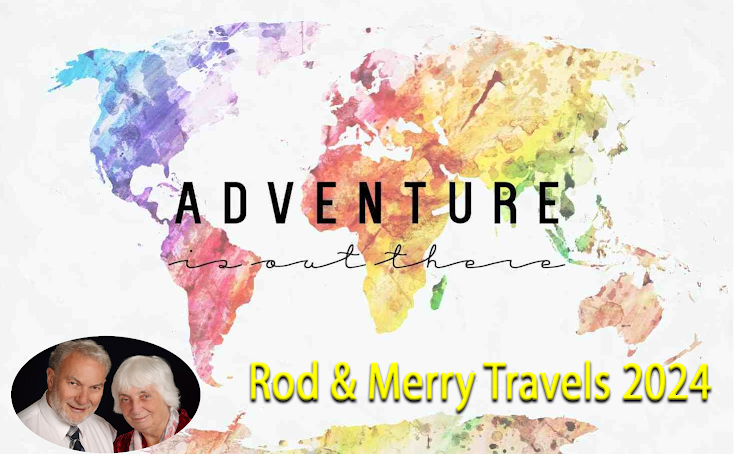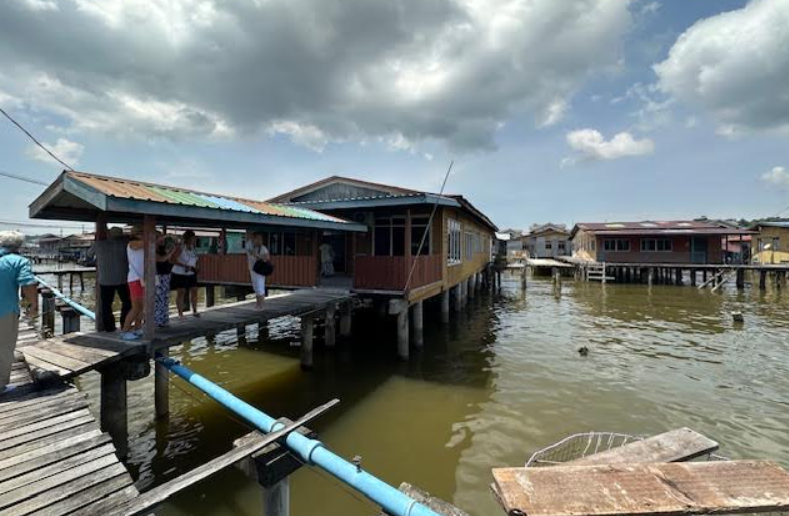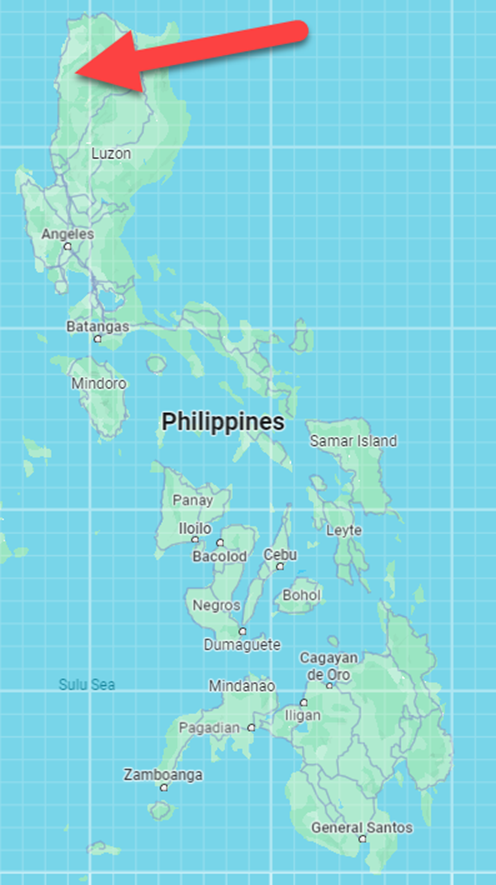Borneo
Tuesday, March 12 seaday
Our stateroom is on deck seven out of ten and includes a balcony. There is not much room, but there is plenty when everything is put away. Our laundry is done for us, and there are free machines when Merry prefers to do it herself.
The ship holds about 650 passengers, 450 of whom are going all the way around the world, and the rest are just doing one or more segments of about 2-3 weeks. There are over 400 crew, so we are well taken care of. This is considered a small ship. Other ships can hold over 6,000 passengers and are like a small city. Our ship can go down rivers and into ports that the big ships cannot
enter.
We can dine at the informal buffet, the formal grand dining room, or one of the two specialty restaurants. Room service is
available 24 hours a day.
Borneo is an island, not a country. It is the third-largest island in the world and is shared by three countries: Indonesia, Malaysia, and tiny Brunei.
Greenland is the largest island, New Guinea is the second, and Madagascar is the fourth. Australia is not an island because it is classified as a continent.
The whole area is peppered with volcanos [the ring of fire], many active or on high alert. Our itinerary kept us well out of harm’s way.
During the art class, we continued to work on watercolor techniques,
surprising especially those who say they cannot draw.
There was a Motown group in the evening theater. I was unsure if this was for me or the older crowd, but they brought the
house down and generated a lot of energy in the audience.
At 1am, we crossed the equator. Thankfully, there was none of the usual pomp and ceremony, and we slept peacefully through it all. A few days later, the certificate said we had
passed through the equator.
Wednesday, March 13 seaday
It was a quiet day. I read and studied, lecture, art, and more watercolor. You must stick around to see to find out what happens after the cruise.
In the evening the Theater had a very good magician.
Thursday, March 14
Today, we arrived in tiny Brunei after spending a week in developing Indonesia. Brunei is a jewel. It is modern, organized, and clean. The houses are large and proudly owned. The roads are wide and well-maintained. The utilities are underground. This all comes from the
wealth of oil and gas within its bounds.
Our guide tells us family is very important. The average house includes husband and wife,
kids, grandparents, and often siblings.
Our guide was a 27-year-old young lady who was not allowed to date by her Chinese parents.
Our first stop on the tour was the Water Village. This is a large community of hundreds or even thousands of homes built on stilts in the river. We visited a typical 2,000-square-foot home with lavish decorations. We were treated to home cooking and drink.
Our second stop took about a tour boat into the mangroves where
the Proboscis Monkeys live, known for there large nose. The island is swampy, and no one is allowed to go ashore, but from our tour boat, the captain soon spotted monkeys in the trees, jumping from tree to tree. We moved a little further into the mangroves to watch monkeys lounging around.
It was sinfully hot in the 90s F, and the humidity was also high. We finally returned to the ship, drenched and ready for a cool shower and to take in all we had seen and experienced.
We attended the show in the evening, and as we waited for the show to start, a lady named Dorothy came over and introduced herself. She had heard that I was born in Southport, UK, and she has lived in Southport all her life. She even taught at my sister Pauline's high school, but only a couple of years after my sister left school. Small world.
Friday, March 15
We arrived in Kota Kinabalu, Malaysia [called locally KK] early. Malaysia is in two places. One is on Borneo, where we visited, and the
other is on what they call ‘the mainland’.
KK is the largest city in Malaysia on Borneo. It was under British rule for over a century but gained independence in 1963. People still drive on the left. Since then, KK has been reinventing itself into a modern country. It is very new and cosmopolitan. It does
not have Brunei's oil and gas, so it is not as wealthy but doing very well.
We visited the Mari-Mari Cultural Center, a recreated village
that teaches and keeps the old culture alive.
Mari Mari means welcome welcome.
We toured several homes representing different tribes, and the
locals demonstrated how they lived. It
was extremely interesting.
The temperature was in the high 90s, as was the humidity. A hat, sunscreen, and lots of water kept us going during the day. We ended the tour at a downtown shopping center, just like at home, and picked up some
needed supplies.
Back at the ship, we collapsed after eating a large ice cream and strawberry Sunday, followed by a long, cool shower.
Saturday, March 16
Today is a well-deserved sea day.
Our cruise is a wonderful opportunity, but long days in sweltering heat in a strange country are challenging on the mind and body.
We had a very interesting lecture about the Philippines, and we are getting ready for the visit over the next two days. At art, we continued our watercolor art
instruction. We have formed a nice group
of four couples and have been doing very well at brainteasers [like trivia]. We all met for dinner and won the brain
teasers [again]. We dispersed to watch
the magician at the late-night show. We
sat next to the husband and wife, grandparents, and two grandchildren, ages
seven and ten. They are the only children on board and have been getting a lot of attention, which is nice, as no children’s programs exist on the ship.
They are well behaved, do some homework during the sea days and get a great education in the countries we visit.
Sunday, March 17
The ship docked early at 7am, and a tour started promptly at 8am. We are now in Manila, the Philippines. Merry and I have traveled extensively, but Asia has always been a mystery, and today, we will
try to unravel that mystery.
From the ship, we saw an impressive skyline of skyscrapers. This must be a wealthy country. Our bus took us from the cruise terminal through the skyscrapers. Thankfully, it was Sunday, so there was very little traffic. Before we knew it, the tall office buildings were behind us, and the neighborhood quickly turned into a poor district. It's like passing through Manhattan and
into the Bronx.
Our bus takes us to a place where pigs fly. In this case, they are on long skewers and ready
for the rotisserie. We got a chance to
see the operation close-up. The
low-income residents welcome our bus and eagerly share their products with
pride, but pigs are not on our shopping list.
They are very nice people.
The next was a short stop in a Chinese cemetery. On one side of the driveway are low-income graves, which are free, much like US graves. On the other side are impressive grave structures costing millions for the wealthy.
Our next stop is the American Battle Monuments Cemetery. This is a surprising stop, but watching a
video in the museum, it all becomes clear.
Just hours after bombing Pearl Harbor, Japan bombed Manila due to its large military presence, with great loss of life to the Americans and the Philippines.
Due to a tight itinerary, we did not have time to watch the whole movie, but they told me the full movie is available on YouTube called “Comrades in Arms”. I invite you to also watch this eye-opening account.
We passed through the flower market district and stopped at a 5-star hotel for a traditional Philippine buffet lunch.
Our next stop was a visit to Rizal Park, where national hero Dr. Jose
Rizal was executed by firing squad with a stunning life-size reproduction of
the event in bronze.
We stopped at San Agustin church and museum. A wedding was in progress in the church, so we
could not see inside, but we did see the museum.
Our last stop was Fort Santiago. Merry and I were so hot and tired that we waited in the AC bus while others investigated for forty minutes. We
enjoyed watching the street activity just as much.
We arrived back at the ship 20 minutes late, making cast off late. This must have been frustrating for the
captain as the pier workers stood waiting, the dock time extended, the tugs
standing by, and the pilot pacing the bridge.
Back on the ship, we had to hustle to prepare for the St Patrick's celebration. This is a much-anticipated ship event, and we all gathered in the Horizons lounge, drinking green beer and singing Irish pub songs. Merry and
the large volunteer choir made a surprise flash mob to sing more traditional
songs.
Next, we had a traditional Irish dinner of corn, beef, cabbage, bangers, mash, and fish pie. All were delicious. The dinner was followed by a show by the full ship's entertainment team. We slept well that night.
Monday, March 18
Today, we arrived at the port of Salomague, which is very far north of the Philippines.
Local students put on a spectacular show for the ship as we edged into the dock.
We took a tour of the city of Vigan, about a one-hour bus ride.
No sign of high-rise buildings or fancy neighborhoods. A complete contract to the glitz of Manila.
In Vigan, we first visited Bantay Church.
This is a very impressive Catholic church, but unfortunately, it was recently devastated by an earthquake.
Being a builder, the renovation work and exposed cracks were of more
interest to me. Heavy beams support the walls all along one side, but I am glad to see renovations underway. The bell tower, being all brick, apparently is very well built and is salvable.
The next stop was a pottery, where Merry tried making a pot with the help of an expert. She did a great job, but she could not take her pot with us as it needed two weeks to dry and then two hours of firing.
Our final stop was Calle Crisologo, in the nearby Kamestizoan
District. This historic street is filled with handicrafts and souvenirs.
We finally made the one-hour ride back to the ship to cool off. Having met and seen the locals, I got a real understanding of these poor people's lives. Rather than feeling sorry for them, they are very happy in their simple and uncomplicated lives. We can learn something from
them.
After dinner, we attended a brain teaser quiz and then went to the show, a concert by a Chinese classical pianist virtuoso [meaning no accompaniment]. It was a wonderful end to a lovely day.
Tuesday, March 19
Today is a sea day traveling the South China Sea to Taiwan. Suddenly, a heavy cold descended on me, prompting me to wear a face mask in public. The word is that the hot, humid weather coupled with sudden air conditioning in rotation can bring this on, with many on
the ship litterly in the blame boat.
Today’s seas were very rough. Because of my boating background, I occasionally like a little bumpy, rocky ride, but some are not so pleasant. So far, it has not bothered Merry, but she avoids a window seat in the
dining room.
The choppy weather made the art class a little more challenging. Our smaller ship reflects the motion more.
We had a great lecture about the upcoming Taiwan, its history, and what to
expect when we arrive.
Wednesday, March 20
We arrived in Keelung harbor on the island of Taiwan. The weather was appreciably cooler, a pleasant 70 degrees, and not humid since we are now traveling north in the
northern hemisphere. This was very
welcome.
We took the excursion bus. I had
a complete misunderstanding. I thought the
tour guide was talking about Type-A, which interests me as I am very
much a Type-A. Apparently, she said
Taipei, the name of the main city in Taiwan.
No big deal.
Taiwan has a population of 23 million, and Taipei has a population of 4
million. Many residents rely on motor
scooters for transport; apparently, there are more registered scooters, 24
million, than people.
The ride took about an hour, and we saw the countryside and how the locals live. Most locals live in apartment or condo buildings, like in China. The roads are good, and the country seems very modern, though our tour guide indicated the pay is very low compared to Western countries.
Our first stop was the National Palace Museum. It was very well organized but very crowded. We learned about Bronze, Jade,
pottery, and ceramics.
Our second stop was the Chiand Kai-Shek Memorial, the first modern leader of Taiwan for 26 years and is well respected. We viewed a seated statue, very similar to the Washington Memorial, and the changing of the guard, which happens every hour and was crowded but very impressive.
We traveled the same way back to the ship and had time to ask our guide questions. My main memory of Taiwan is the very low-quality goods shipped to England in the 70’s. A look at the label and Taiwan meant poor
quality to my family. A second question
about the impending invasion by China.
The guide did not want to talk about that. It appears the locals are in denial, hoping it will not happen. We arrived at
the ship just in time for the extended lunch, followed by a well-earned nap.
In the next post of this blog, you will read about our visit north to Japan. To be notified of upcoming blogs, please enter your email on the left panel and press subscribe. If you are viewing on a smartphone, select the three horizontal lines.
































Comments
Post a Comment